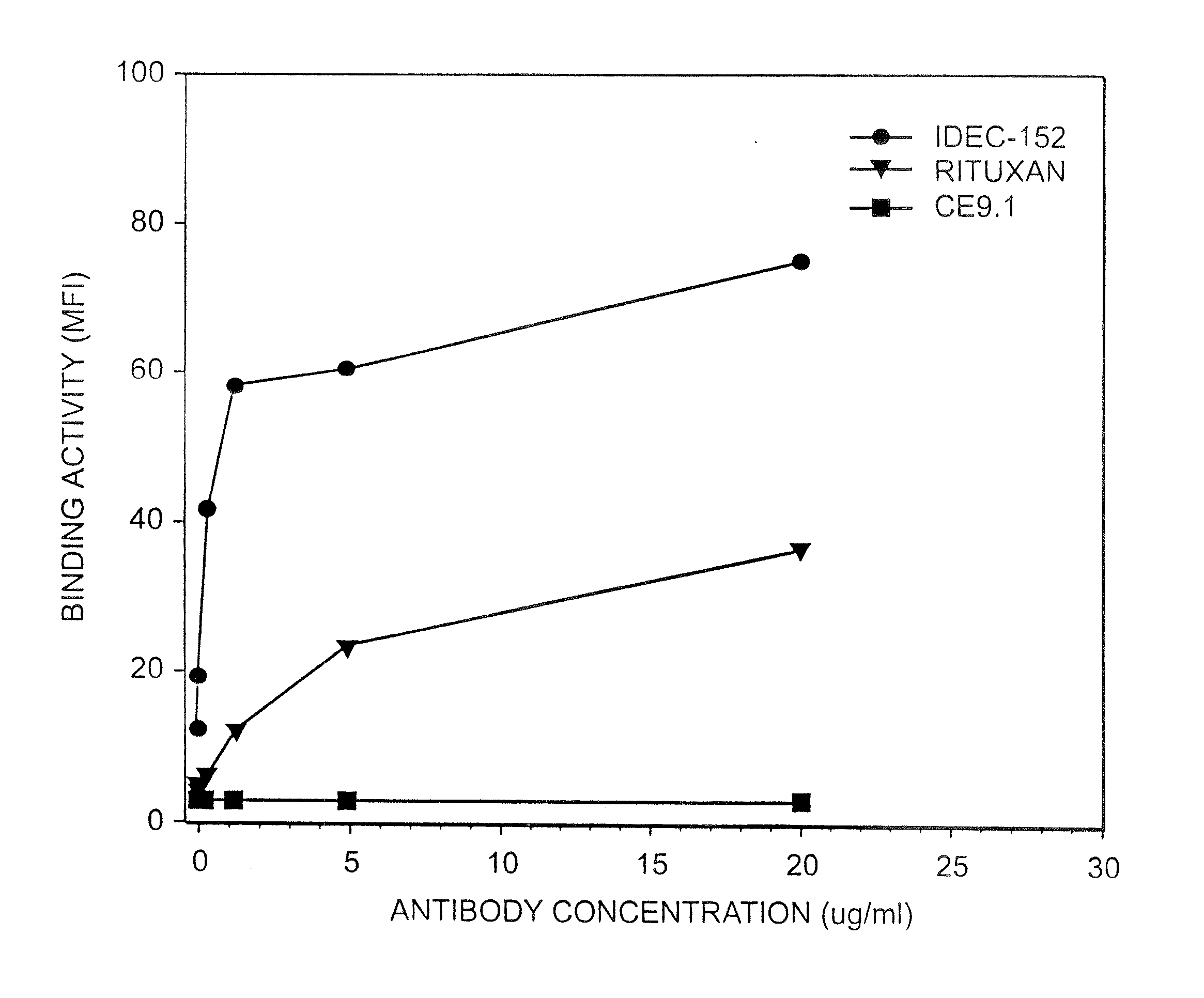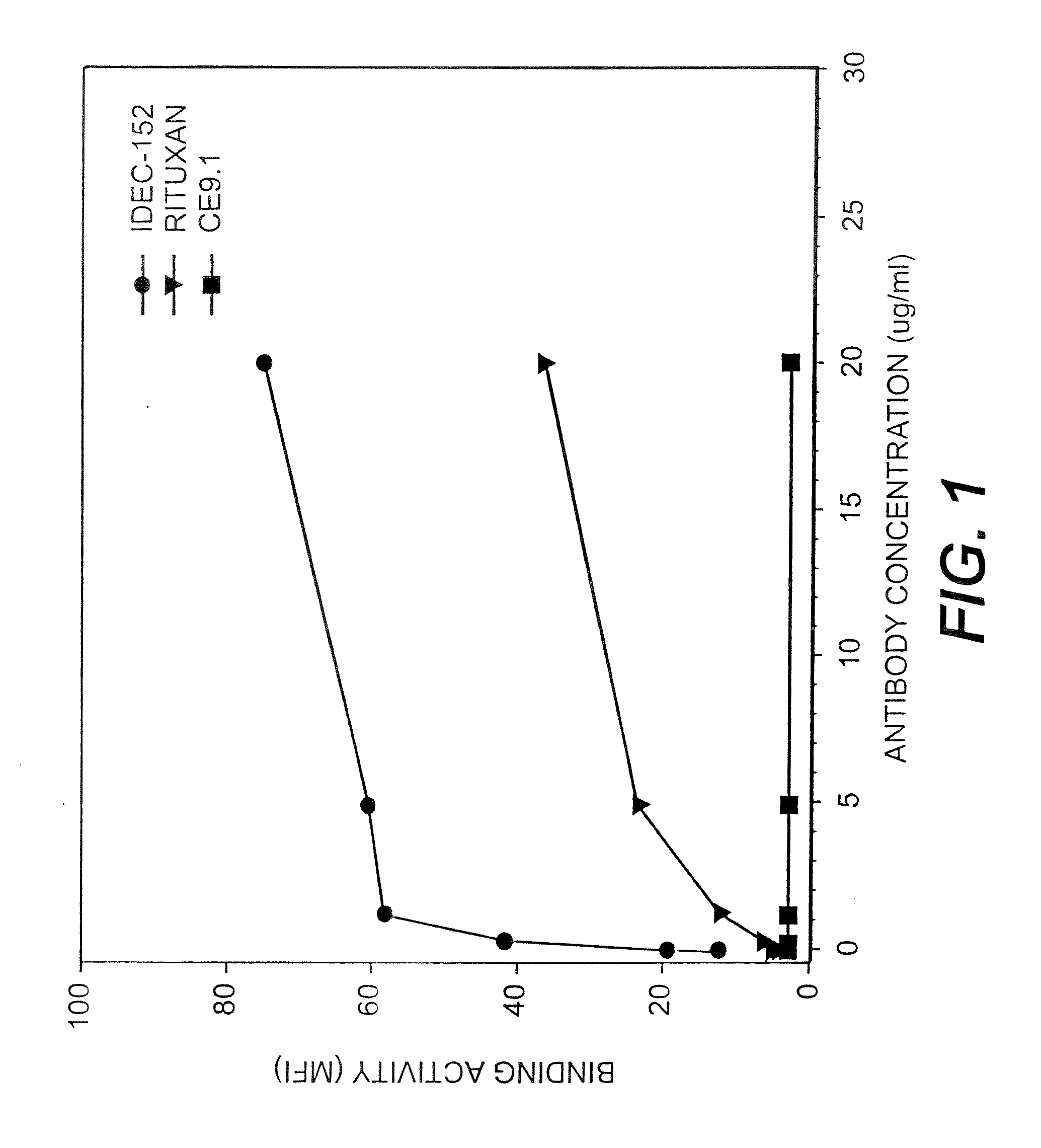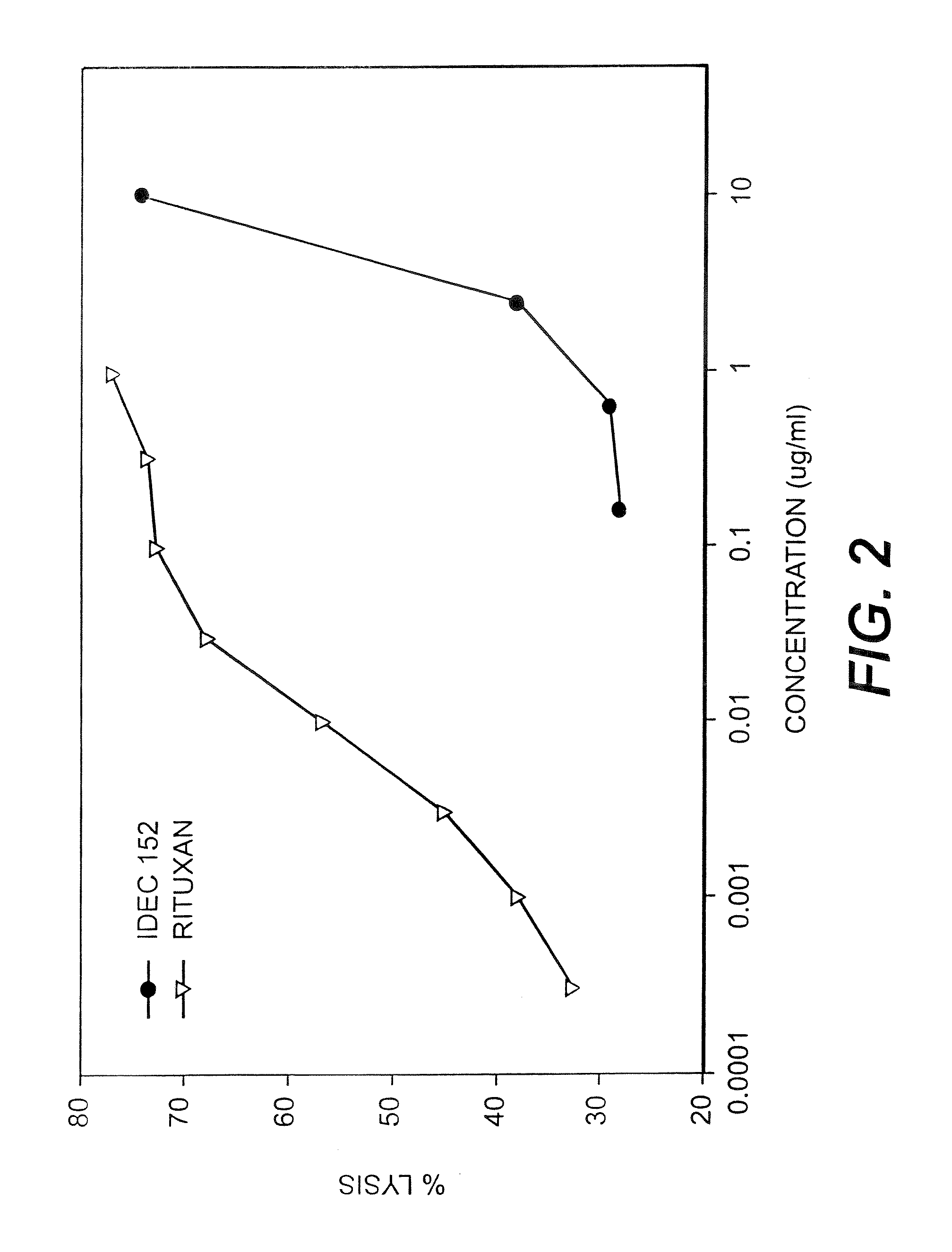Use of CD23 antagonists for the treatment of neoplastic disorders
a neoplastic disorder and cd23 technology, applied in the direction of antibody medical ingredients, drug compositions, peptides, etc., can solve the problems of limiting optimal cytotoxic dose, affecting the survival rate of patients, and current therapies unavailable to immunocompromised, debilitated or older patients, etc., to reduce, inhibit or control the growth of neoplastic cells
- Summary
- Abstract
- Description
- Claims
- Application Information
AI Technical Summary
Benefits of technology
Problems solved by technology
Method used
Image
Examples
example 1
Expression CD23 in B-Lymphoma and B-CLL Cells
[0137] The expression of CD23 in several lymphoma cell lines was determined by flowcytometry. More particularly, CD23 expression was evaluated by flowcytometry using anti-CD23 PE-labeled antibody (BD Biosciences, Cat.No; 33615X). The relative fluorescence intensity (RFI) of antibody binding was determined by comparing the mean fluorescence intensity of anti-CD23-PE antibody binding to cells to that of the mean fluorescence intensity of the PE-labeled calibration beads (QuantiBrite). The relative expression of CD23 was calculated as RFI (sample)÷RFI of the SKW cells.
[0138] CD20- and B7-expressing B-lymphoma cell lines (SKW, SB, Daudi, Raji, Ramos and DHL-4 cells) were cultured in complete medium. Complete medium is RPMI 1640 medium (Irvine Scientific, Santa Ana, Calif.) supplemented with 10% heat inactivated FBS (Hyclone), 2 mM 1-glutamine, 100 units / ml of penicillin, and 100 ug / ml of streptomycin. The SKW cell line is Epstein-Barr virus...
example 2
Expression CD23 in CLL Cells
[0143] In order to demonstrate the clinical applicability of the present invention, the expression of CD23 on several different CLL samples (31 patients) was tested in whole blood by flowcytometry. Using appropriate reagents, flowcytometry was performed as substantially described in Example 1. In this respect, the expression of CD20 and CD23 was determined on gated cells that were CD19+ positive. Specifically, PE labeled anti-CD20 (BD Biosciences / Pharmingen, Cat #555623) and anti-CD23 (BD Biosciences / Pharmingen, Cat #33615X) monoclonal antibodies were used to detect CD20 and CD23 molecules respectively.
[0144] In all patients, the expression of both CD20 and CD23 antigen was detected in CD19+B cells as shown immediately below in Table 2. Patients expressing high CD20 levels expressed varying degrees of CD23 antigen in their CLL samples. The levels were determined by the percentage CD19+ cells and mean fluorescence intensity (MFI). However, even in patien...
example 3
Binding of IDEC-152 to CD23+ Cells
[0145] To further demonstrate the advantages of the present invention, the binding activity of IDEC-152 to CD23 on SKW lymphoma cells was determined by flowcytometry as set forth in the previous examples. As indicated above, SKW cells may be used to provide a clinically relevant model for CD23+ malignancies including CLL. The results of the assay are set forth in FIG. 1, which shows the specific binding of Rituxan and IDEC-152 to SKW cells in a concentration dependent fashion. The binding activity is measured using mean fluorescence intensity and shows that the SKW cells bind substantially higher levels of anti-CD23 antibodies than anti-CD20 antibodies. This indicates that, in certain cell lines and tumors, CD23 may exhibit a higher epitope density than other markers such as CD20. As expected, isotype-matched control antibody of irrelevant specificity (CE9.1, directed to CD4) did not bind to SKW. This Example, and the corresponding results set fort...
PUM
| Property | Measurement | Unit |
|---|---|---|
| Fraction | aaaaa | aaaaa |
| Fraction | aaaaa | aaaaa |
| Fraction | aaaaa | aaaaa |
Abstract
Description
Claims
Application Information
 Login to View More
Login to View More - R&D
- Intellectual Property
- Life Sciences
- Materials
- Tech Scout
- Unparalleled Data Quality
- Higher Quality Content
- 60% Fewer Hallucinations
Browse by: Latest US Patents, China's latest patents, Technical Efficacy Thesaurus, Application Domain, Technology Topic, Popular Technical Reports.
© 2025 PatSnap. All rights reserved.Legal|Privacy policy|Modern Slavery Act Transparency Statement|Sitemap|About US| Contact US: help@patsnap.com



